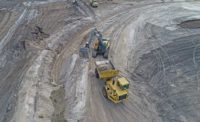The signs of a gradual recovery are beginning to surface for the region's design firms as private sector work—especially for the commercial, multifamily and higher education markets—increases. Design executives are hesitant to declare an all-out victory, however, because the overall economy remains sluggish and work is greatly dragging in the public sector, a situation that is expected to continue for a few years. Even so, executives say, more and more owners and developers are making inquiries and some are moving forward, albeit at a cautious pace.


The uptick is reflected in the ranking of the top 90 design firms that participated in ENR New York's survey this year. A majority of firms (51% of the total), racked up higher revenue in the tristate region in 2012 than in the prior year; 26% posted declines; and 23%, or 21 firms, were new participants
"We're quite optimistic about the next couple of years," says Leo Argiris, principal at Arup, which moved up two notches in the ranking to eighth place and grew its regional revenue 12% last year to $91.2 million. The boost came largely from the firm's work in the commercial, residential and higher education sectors, he says. Arup's major projects include the $185-million Princeton University Neuroscience Building in Princeton, N.J., as well as the $117-million B2 residential tower at Atlantic Yards.
The west side of New York City is particularly active with numerous projects under way, including the last leg of the High Line Park, the Hudson Yards South Tower and the new building for the Whitney Museum. "You can see cranes now—something you haven't seen in a while," says Ira Levy, AECOM Northeast executive vice president.
AECOM's 2012 regional revenue improved less than 1% over the prior year, to $312 million, but the firm still managed to nab the No. 1 spot in the ranking from ARCADIS U.S., now No. 2. Among AECOM's major projects is the Metropolitan Transportation Authority's (MTA) $4.45-billion Second Avenue Subway (SAS), for which the firm is the prime engineering and design contractor.
Bucking the general trend in the public sector, transportation work made a strong showing in this year's ranking with projects including the Connecticut Dept. of Transportation's New Britain to Hartford Busway.
But it is the private side that designers are most optimistic about. One of the positive indicators is that designers are fielding more inquiries from developers in the commercial and residential sectors than they were in the recent past, Argiris says.
That is backed up by data from the American Institute of Architects (AIA), whose national project inquiries index rose to 64.8 in February, the highest mark in six years and up from 63.2 in January. The trade group's architecture billing index, another leading indicator, reached 54.9 for February, up from 54.2 in January. The score marks the strongest growth in demand for design services since early 2008, AIA says.
Superstorm Sandy reconstruction is contributing to moderate growth in the region, executives say. "Sandy has helped create this shorter-term infrastructure trend," says Bernie McNeilly, senior vice president of the Northeast region and general manager at Parsons Brinckerhoff, which generated $161 million in sales and is ranked No. 4. The firm's major projects include the MTA's $8.24-billion East Side Access subway as well as the SAS.
Among regional trends, demand is rising for public-private partnerships (P3), design-build and construction management at-risk contracts, executives say. Several major bridge replacement/rehabilitation projects, including the Goethals, Kosciuszko, Bayonne and Tappan Zee, are intended for P3 or design-build delivery.
Despite the uptick in work, executives say that budget battles in Washington are tying up funding for some capital projects. There are challenges surrounding long-term funding and economic uncertainty for both the public and private sectors, they add.
"Conditions have been strengthening in all regions and construction sectors for the last several months," says Kermit Baker, AIA chief economist. "Still, we also continue to hear a mix of business conditions in the marketplace as this hesitant recovery continues to unfold."





Post a comment to this article
Report Abusive Comment